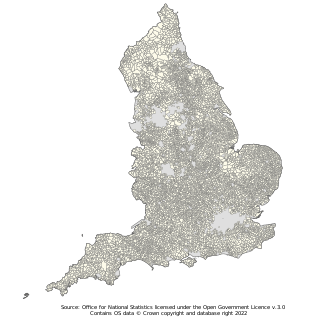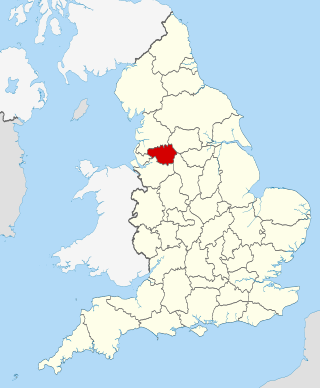Administrative law is a division of law governing the activities of executive branch agencies of government. Administrative law includes executive branch rule making, adjudication, and the enforcement of laws. Administrative law is considered a branch of public law.

The Greater London Authority (GLA), colloquially known by the metonym City Hall, is the devolved regional governance body of Greater London, England. It consists of two political branches: an executive Mayor and the 25-member London Assembly, which serves as a means of checks and balances on the Mayor. Since May 2016, both branches have been under the control of the London Labour Party. The authority was established in 2000, following a local referendum, and derives most of its powers from the Greater London Authority Act 1999 and the Greater London Authority Act 2007.
In England, local authorities are required to adopt one of three types of executive arrangements, having an "elected mayor and cabinet", a "leader and cabinet", or a "committee system". The type of arrangement used determines how decisions will be made within the council. In councils which use the elected mayor system, the mayor is directly elected by the electorate to provide political leadership for the council and has power to make executive decisions. In councils which use the leader and cabinet model, the elected councillors choose one of their number to be the Leader of the Council, and that person provides political leadership and can make executive decisions. Where the committee system is used, executive power is exercised through various committees rather than being focussed on one person. Many councils which use the committee system still nominate one of the councillors to hold the title 'Leader of the Council', albeit without the same powers as a leader under the leader and cabinet model.

A statutory instrument (SI) is the principal form in which delegated legislation is made in Great Britain.

A parish council is a civil local authority found in England, which is the lowest tier of local government. They are elected corporate bodies, with variable tax raising powers, and they carry out beneficial public activities in geographical areas known as civil parishes. There are about 10,480 parish and town councils in England. Parish councils may be known by different styles, they may resolve to call themselves a town council, village council, community council, neighbourhood council, or if the parish has city status, it may call itself a city council. However their powers and duties are the same whatever name they carry.

A government agency or state agency, sometimes an appointed commission, is a permanent or semi-permanent organization in the machinery of government (bureaucracy) that is responsible for the oversight and administration of specific functions, such as an administration. There is a notable variety of agency types. Although usage differs, a government agency is normally distinct both from a department or ministry, and other types of public body established by government. The functions of an agency are normally executive in character since different types of organizations are most often constituted in an advisory role—this distinction is often blurred in practice however, it is not allowed.

In England, a civil parish is a type of administrative parish used for local government. It is a territorial designation which is the lowest tier of local government. Civil parishes can trace their origin to the ancient system of parishes, which for centuries were the principal unit of secular and religious administration in most of England and Wales. Civil and religious parishes were formally split into two types in the 19th century and are now entirely separate. Civil parishes in their modern form came into being through the Local Government Act 1894, which established elected parish councils to take on the secular functions of the parish vestry.
Local education authorities (LEAs) were defined in England and Wales as the local councils responsible for education within their jurisdictions. The term was introduced by the Education Act 1902 which transferred education powers from school boards to existing local councils.

Local authority areas in England typically have an executive leader and a cabinet selected from the local council, similar to how the national prime minister and cabinet are selected from Parliament. In contrast, residents of some areas, or groups of areas known as combined authorities or combined county authorities, directly elect the executive mayors of their local government.
The Epping Forest Keepers are an ancient and historic body of people who are employed by the City of London, who in return are responsible, on behalf of the Conservators, for the management and care of Epping Forest, which covers approximately ten square miles of forest, bridleway, woodland and recreational space stretching from Forest Gate in east London, north to North Weald in Essex. The forest is managed by the City of London Corporation and is one of many open spaces that comes under their control that is outside the Square Mile that are maintained by the Corporation of London at no expense to the taxpayer.

A Scottish statutory instrument is subordinate legislation made by the Scottish Ministers, as well as subordinate legislation made by public bodies using powers provided to be exercisable by Scottish statutory instrument. SSIs are the main form of subordinate legislation in Scotland, being used by default to exercise powers delegated to the Scottish Ministers, the Lord Advocate, the High Court of Justiciary, the Court of Session, and the King-in-Council.

The fire services in the United Kingdom operate under separate legislative and administrative arrangements in England and Wales, Northern Ireland, and Scotland.

An Act of Parliament in the United Kingdom is primary legislation passed by the UK Parliament in Westminster, London.
In certain areas of England, Conservators are statutory bodies which manage areas of countryside for the use of the public.

Local and personal acts are laws in the United Kingdom which apply to a particular individual or group of individuals, or corporate entity. This contrasts with a public general Act of Parliament (statute) which applies to the nation-state. Acts of Parliament can afford relief from another law; grant a unique benefit or, grant powers not available under the general law; or, relieve someone from legal responsibility for some allegedly wrongful act.
The Airport Police Service (APS) is a small private police force responsible for providing general security and aviation security duties at the three state airports in Ireland: Dublin Airport, Cork Airport and Shannon Airport. The Airport Police Service was first founded in 1936 in Dublin Airport and first became "Authorised Officers" under section 15 of the Air Navigation and Transport Act 1950 for the Minister of Transport.

The Greater Manchester Combined Authority (GMCA) is a combined authority for Greater Manchester, England. It was established on 1 April 2011 and consists of 11 members; 10 indirectly elected members, each a directly elected councillor from one of the ten metropolitan boroughs that comprise Greater Manchester, together with the directly elected Mayor of Greater Manchester. The authority derives most of its powers from the Local Government Act 2000 and Local Democracy, Economic Development and Construction Act 2009, and replaced a range of single-purpose joint boards and quangos to provide a formal administrative authority for Greater Manchester for the first time since the abolition of Greater Manchester County Council in 1986.

The Localism Act 2011 is an Act of Parliament that changes the powers of local government in England. The aim of the act is to facilitate the devolution of decision-making powers from central government control to individuals and communities. The measures affected by the Act include an increase in the number of elected mayors, referendums and the "Local authority’s general power of competence" which states "A local authority has power to do anything that individuals generally may do".

New Zealand has a unitary system of government in which the authority of the central government defines sub-national entities. Local government in New Zealand has only the powers conferred upon it by the New Zealand Parliament. Under the Local Government Act 2002, local authorities are responsible for enabling democratic local decision-making and promoting the social, economic, environmental, and cultural well-being of their communities, as well as more specific functions for which they have delegated authority.